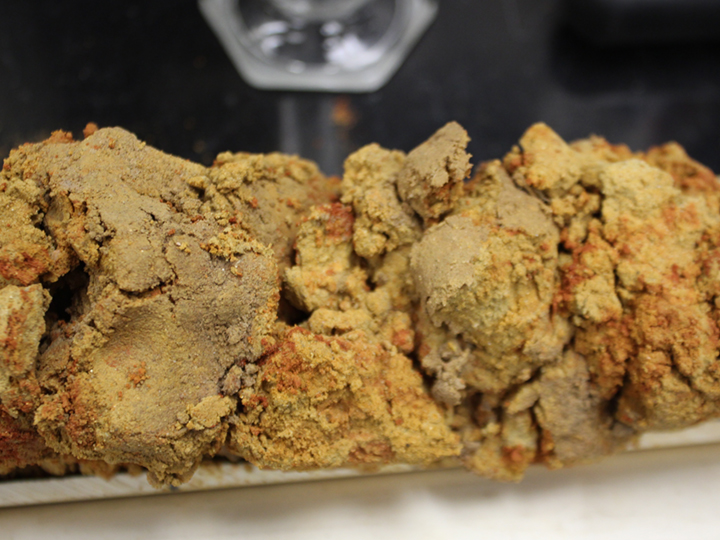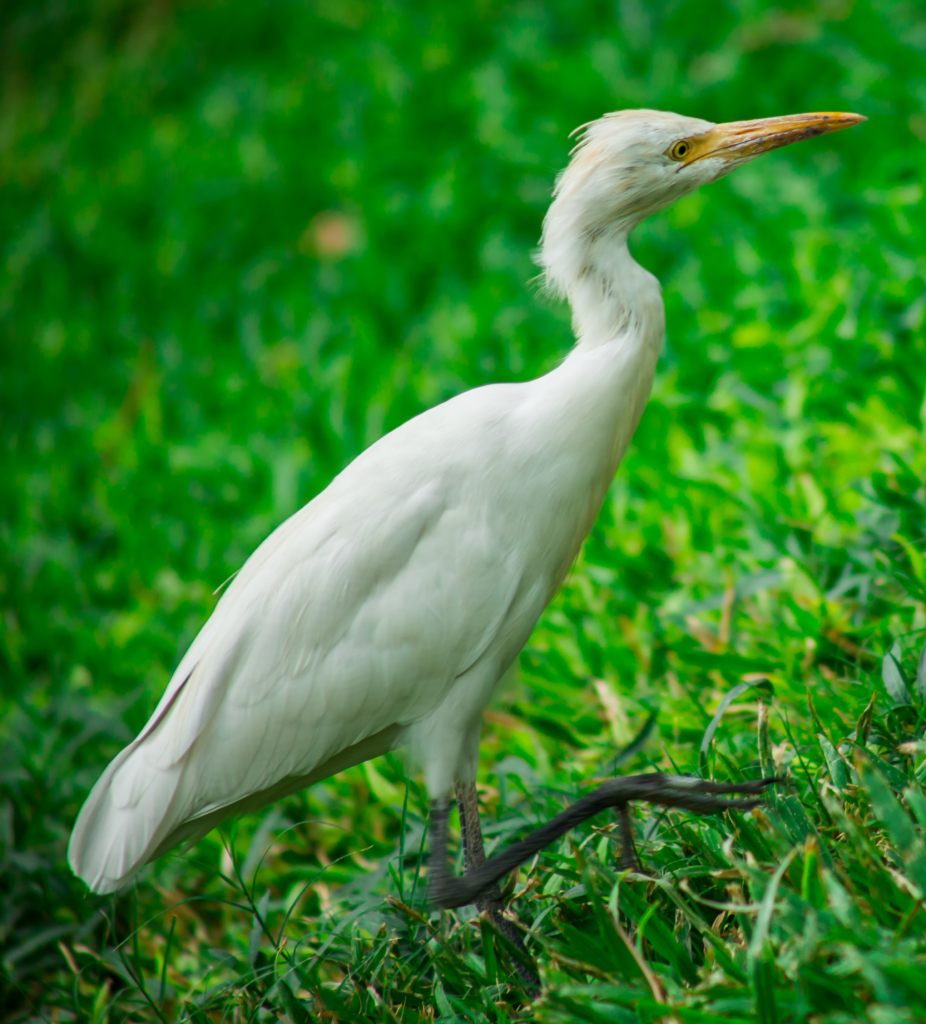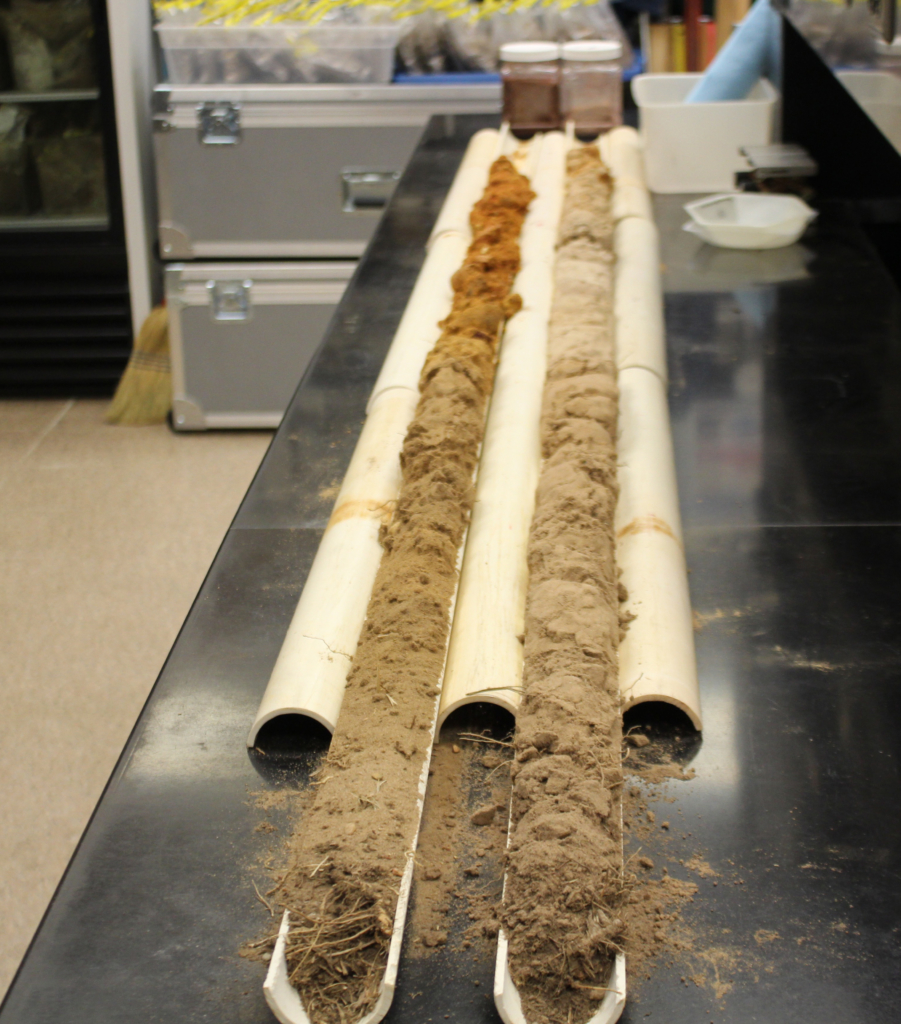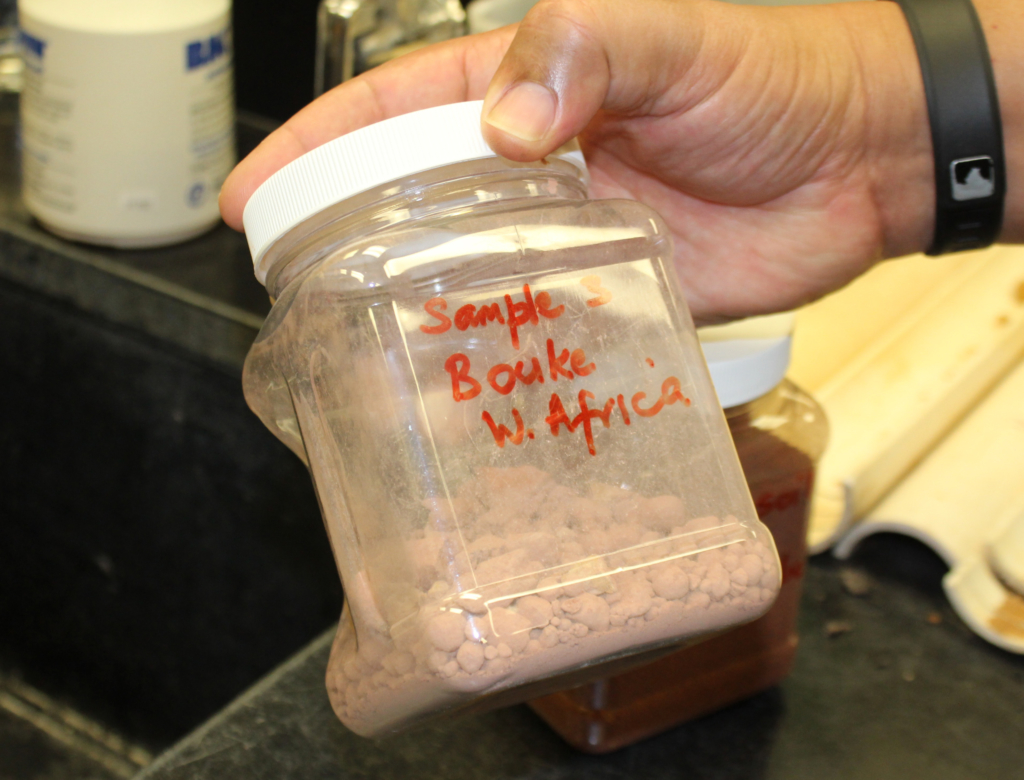Every year Americans suffer from respiratory complications during the spring and summer seasons. Some may be surprised, the cause of these complications may originate in Africa. An exceptionally large plume of dust from Africa’s Sahara and Sahelian Deserts blows across the Atlantic Ocean and will make its way to Texas.
 For over a decade, a group of researchers led by Dr. Richard W. Griffin, Professor and Research Scientist for Prairie View A&M University’s College of Agriculture and Human Sciences, has been conducting the Saharan and Sahelian Red Dust Collection Project (SSRDCP). The SSRDCP seeks to determine whether red colored soils found on PVAMU’s Gov. Bill and Vara Daniel Farm originate from the Saharan or Sahelian regions of Africa.
For over a decade, a group of researchers led by Dr. Richard W. Griffin, Professor and Research Scientist for Prairie View A&M University’s College of Agriculture and Human Sciences, has been conducting the Saharan and Sahelian Red Dust Collection Project (SSRDCP). The SSRDCP seeks to determine whether red colored soils found on PVAMU’s Gov. Bill and Vara Daniel Farm originate from the Saharan or Sahelian regions of Africa.
The project which began in 2003 was developed during a visit to King Ranch in South Texas. A to ur guide noted that a flock of cattle egrets in the region was directly descended from the original West African flock. Cattle Egrets are a bird species that forage in flocks in upland areas such as pastures and fields. This particular flock traveled to Texas by a hurricane in the 1800’s. The guide went on to say that all cattle egrets in the US are descended from that same flock. Griffin thought that if the winds were strong enough to carry a flock of egrets across the ocean surely they could carry dust from the desert.
ur guide noted that a flock of cattle egrets in the region was directly descended from the original West African flock. Cattle Egrets are a bird species that forage in flocks in upland areas such as pastures and fields. This particular flock traveled to Texas by a hurricane in the 1800’s. The guide went on to say that all cattle egrets in the US are descended from that same flock. Griffin thought that if the winds were strong enough to carry a flock of egrets across the ocean surely they could carry dust from the desert.
The dust storms happen two or three times a year in the late spring and summer. The sands, mostly from the Sahara Desert, are carried on strong winds about 5,000 miles across the Atlantic Ocean to the Americas. These large clouds of dust are referred to as the Saharan Air Layer (SAL), and according to the Weather Channel, the SAL typically travel about 5,000 to 15,000 feet above the Earth’s surface.
The dust from the SAL can cause hazy skies and can trigger large, environmentally harmful algal blooms in the Gulf of Mexico. This research is important as bacteria on the dust can survive the long journey across the Atlantic into the United States and the Caribbean Islands. Griffin states, “There will be some impact on humans that have asthma conditions, allergies, and upper respiratory illnesses”. The SSRDCP researchers at PVAMU are finding new information about the dust’s impact on soil and society in Southeast Texas. As Griffin explains, “This is one of the reasons we are interested in continuing this work. It has bioenvironmental and biomedical implications.”
 PVAMU are having continued discussions with other scientists from the fields of microbiology, biotechnology, ecology, and environmental sciences about the potential bioenvironmental and biomedical implications of the microbes, pesticides, and heavy metals that may exist on the surface of the red dust particles and their potential negative impacts on humans and other animals as related to diseases, including upper respiratory ailments and cancers. Griffin explains, “At some point, a transnational collaboration has to address the issue, because the skies belong to all global citizens, so it’s our duty to be proactive in addressing present and future conditions that may affect each of us in our intimately connected world.”
PVAMU are having continued discussions with other scientists from the fields of microbiology, biotechnology, ecology, and environmental sciences about the potential bioenvironmental and biomedical implications of the microbes, pesticides, and heavy metals that may exist on the surface of the red dust particles and their potential negative impacts on humans and other animals as related to diseases, including upper respiratory ailments and cancers. Griffin explains, “At some point, a transnational collaboration has to address the issue, because the skies belong to all global citizens, so it’s our duty to be proactive in addressing present and future conditions that may affect each of us in our intimately connected world.” In the Fall 2018 semester, as a part of Prairie View’s Agronomy class project, in collaboration of an Environmental Research project with the University of Houston Biotechnology Program, the students will sample more soil traps. During the last 15 years, PVAMU has collected dust samples which have been used in collaborative projects with the University of Saint Thomas and Houston Community College research teams.
In the Fall 2018 semester, as a part of Prairie View’s Agronomy class project, in collaboration of an Environmental Research project with the University of Houston Biotechnology Program, the students will sample more soil traps. During the last 15 years, PVAMU has collected dust samples which have been used in collaborative projects with the University of Saint Thomas and Houston Community College research teams.While it may not be healthy for humans, Saharan dust can prove beneficial for the environment. Trees and plants in the Amazon Rainforest rely on the nutrient-rich dust, which helps to keep the area fertile, New Scientist reported.
Dust clouds from the Sahara are often so big they can be seen from space. Space station crew members frequently report seeing Saharan dust masses as very widespread atmospheric haze, according to Nasa. There is also evidence, according to NASA, that dust from Africa can lead to large toxic algae blooms in the Gulf of Mexico.
A NASA funded study found that iron from the dust clouds is deposited in the Gulf of Mexico and plant-like bacteria use the iron to set the stage for the toxic algae blooms. These blooms can cause respiratory problems, and consuming poisoned shellfish can lead to paralysis and memory problems, in addition to killing marine life.
For more details about the SSRDCP and the SAL, contact Dr. Richard Griffin (rwgriffin@pvamu.edu). This work is supported by the USDA National Institute of Food and Agriculture, Evans-Allen 1890 Research Formula Program projects under Section 1445.
Written by Maurice Perkins & Jakari Bates
